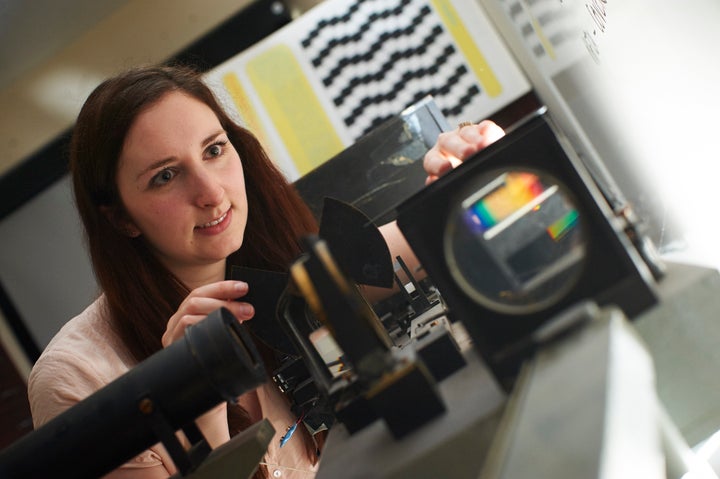As the seasons change -- from summer to fall to winter to spring -- so does our perception of color. At least, that's according to a provocative new study out of the University of York in England.
It turns out that, for those of us living in areas where we experience seasons, we tend to perceive yellow with a more greenish hue during the summer. Our perception of color shifts slightly without us even realizing it.
"We were excited by our findings," Lauren Welbourne, a PhD student in psychology at the university and lead author of the study, told The Huffington Post in an email. "This is the first time that a natural change in the environment has been found to cause this shift in unique yellow settings."
(Story continues below image.)

Lauren Welbourne with a colorimeter machine.
For the study, the researchers tested the color perception of 67 men and women in January and June. The participants were placed in a dark room and were asked to adjust a colorimeter machine to exhibit the color unique yellow. The color yellow -- along with blue, green, and red -- is a "unique hue," which means that it does not appear to contain mixtures of other colors.
The researchers tested with the color yellow because humans tend to perceive unique yellow similarly across large populations. After analyzing the test results, the researchers noticed that the difference in how the men and women perceived unique yellow in winter versus summer also was consistent with all of the participants.
The researchers concluded that the shift in how yellow is perceived may be a result of how our vision compensates for being exposed to more "green" colors in the summer months (when foliage flourishes) compared to the winter months.
"You typically have grey, dull winters and then in summer you have greenery everywhere. Our vision compensates for those changes and that, surprisingly, changes what we think 'yellow' looks like. It’s a bit like changing the color balance on your TV," Welbourne said in a written statement. "The more we learn about how vision and color in particular is processed, the better we can understand exactly how we see the world."
The study was published online in the journal Current Biology on August 3, 2015.

